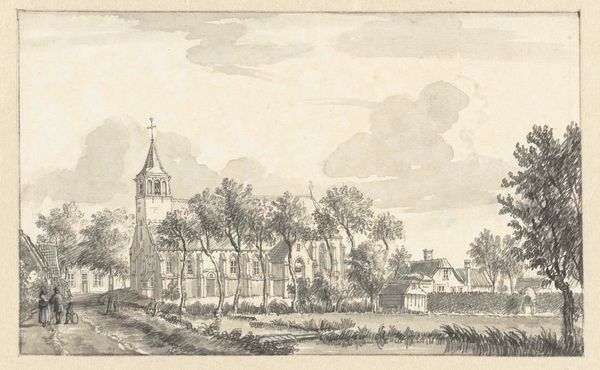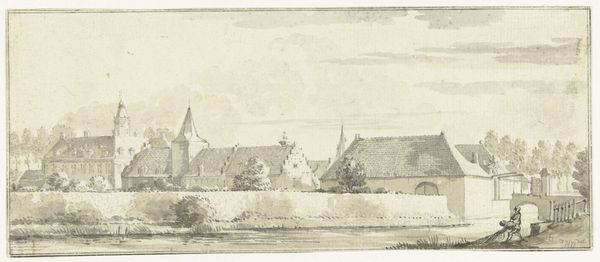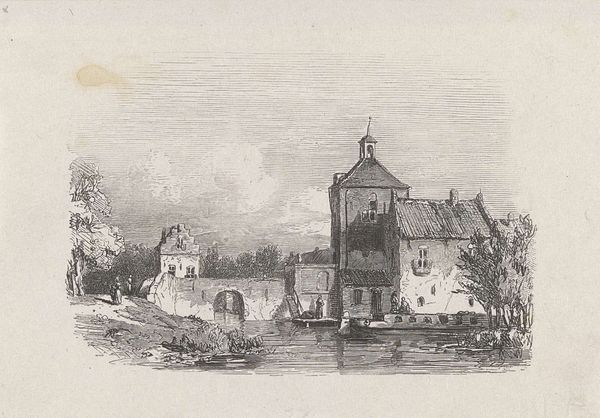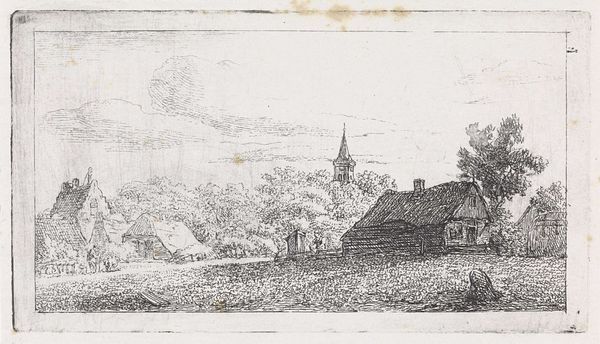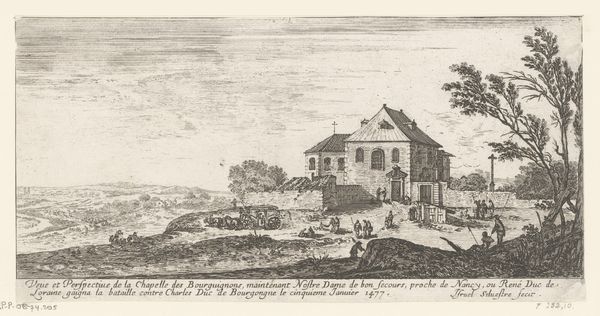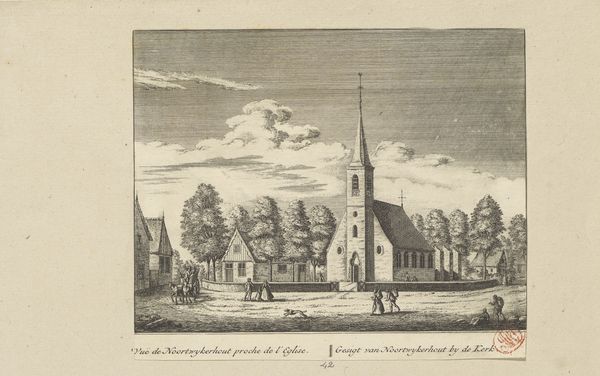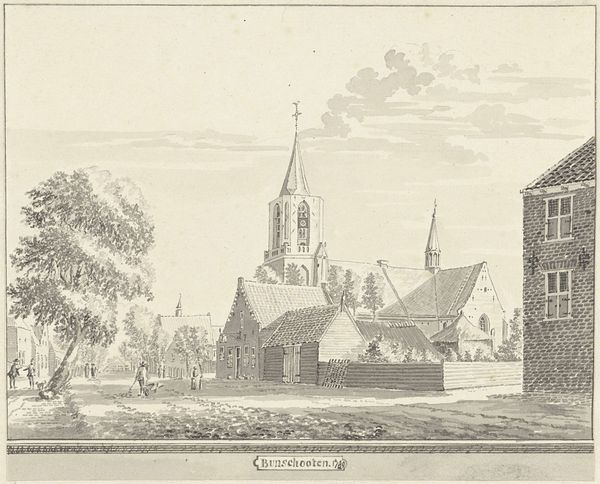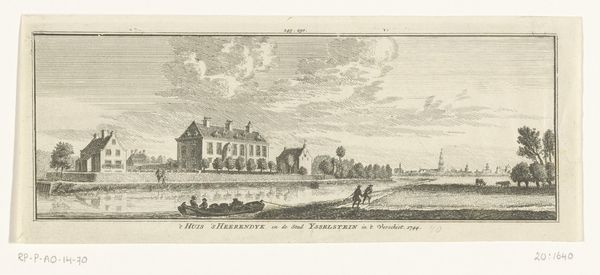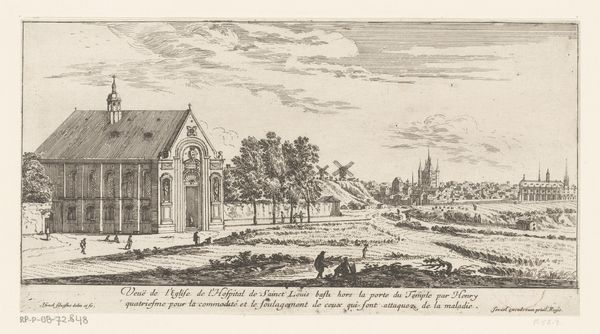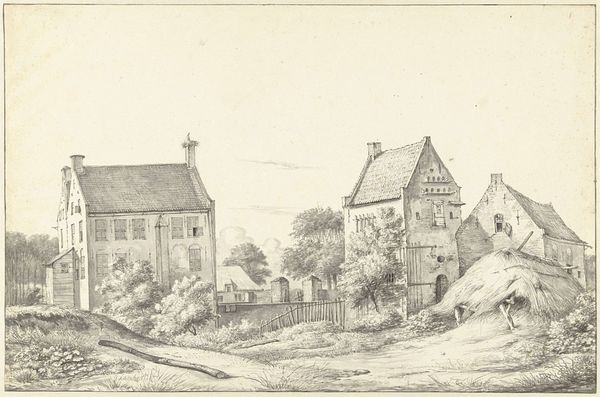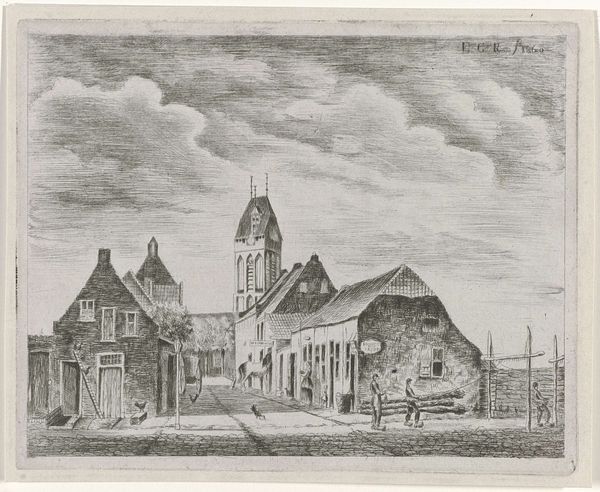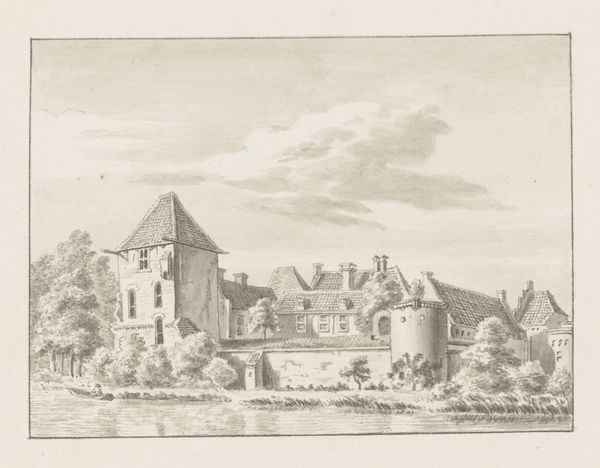
drawing, pencil, pen, architecture
#
drawing
#
baroque
#
pencil sketch
#
landscape
#
pencil
#
pen
#
cityscape
#
architecture
Dimensions: height 132 mm, width 270 mm
Copyright: Rijks Museum: Open Domain
Curator: Jan de Beijer’s rendering of "De Heukelomse Poort te Asperen," likely created between 1750 and 1758, presents a serene cityscape through a delicate interplay of pen, pencil, and drawing techniques. Editor: It evokes a quiet nostalgia; there's a sense of looking back, a preservation of a moment in time but what statements do these images project and who gets to produce them. Curator: Indeed. Note the strategic placement of the Heukelomse Poort and the towering church, their looming silhouettes perhaps symbolize established orders, whether secular or spiritual. Editor: That emphasis on these monumental landmarks, seen against what appears to be an otherwise domestic landscape, does bring the themes of institutional authority and everyday life to the forefront, hinting at a nuanced power dynamic in eighteenth-century Dutch society. Were images like these used to reinforce hegemonic values? Curator: That's a really relevant inquiry. Architectural drawings like this also documented civic and religious power and functioned as records of a changing environment; there is also an aesthetic preservation going on in this era through these type of drawings, creating a selective memory through carefully crafted details. Editor: Let’s not overlook the technical elements here either. I wonder if the delicate pencil sketch suggests something about accessibility and privilege: the luxury to depict serene scenes amidst broader societal struggles that are conspicuously absent from view. We must address whose perspectives are centered here and whose are excluded? Curator: Your highlighting that prompts a needed reminder of absences and hidden stories—who existed behind or because of this scenery? De Beijer has chosen a rather distanced point of view, positioning the viewer as an outsider observing. We miss details of labor and lived experiences within the town itself. The gate seems symbolically to function both as a boundary and point of entrance and exit. Editor: It prompts essential questions about landscape art's relationship to the dominant societal power structures during its time. By unveiling the stories intertwined in and absent from this art piece, we begin to better understand both the power and the gaps present within art history. Curator: The layers of symbolism that this initially modest-seeming townscape drawing holds continues to offer us reflections on our own ways of seeing history and the world, don't they? Editor: Precisely, a single image can unearth questions, prompt reinterpretations, and advocate for dialogue with the cultural inheritance around us, particularly now when civic memory seems to require greater engagement.
Comments
No comments
Be the first to comment and join the conversation on the ultimate creative platform.
